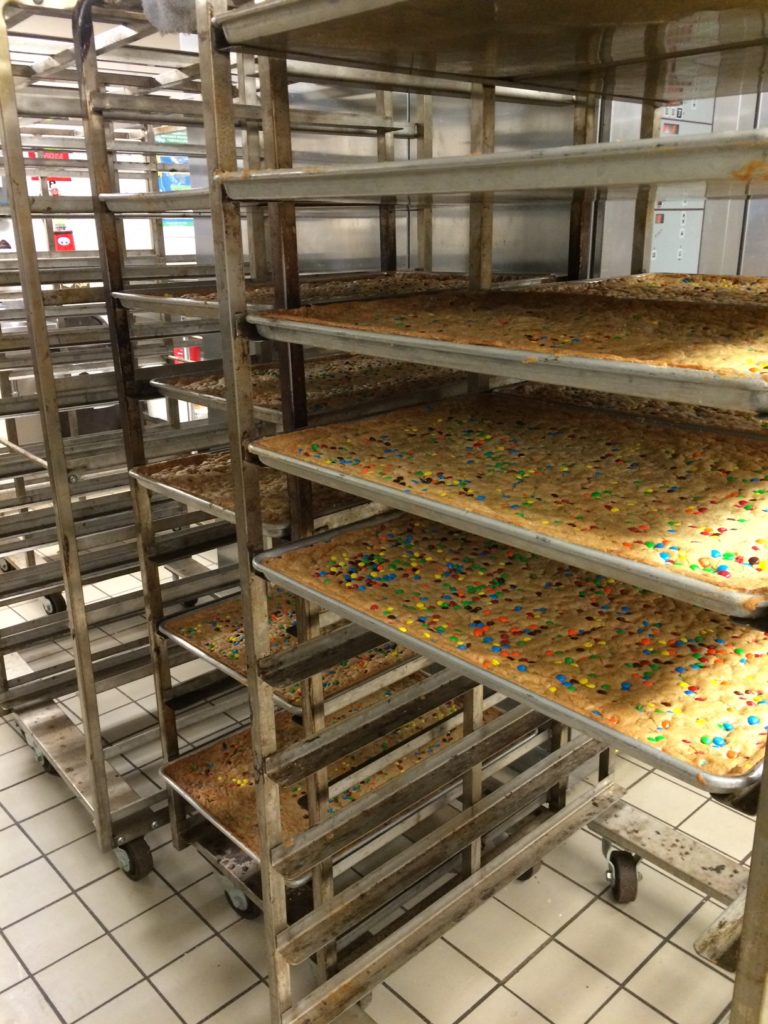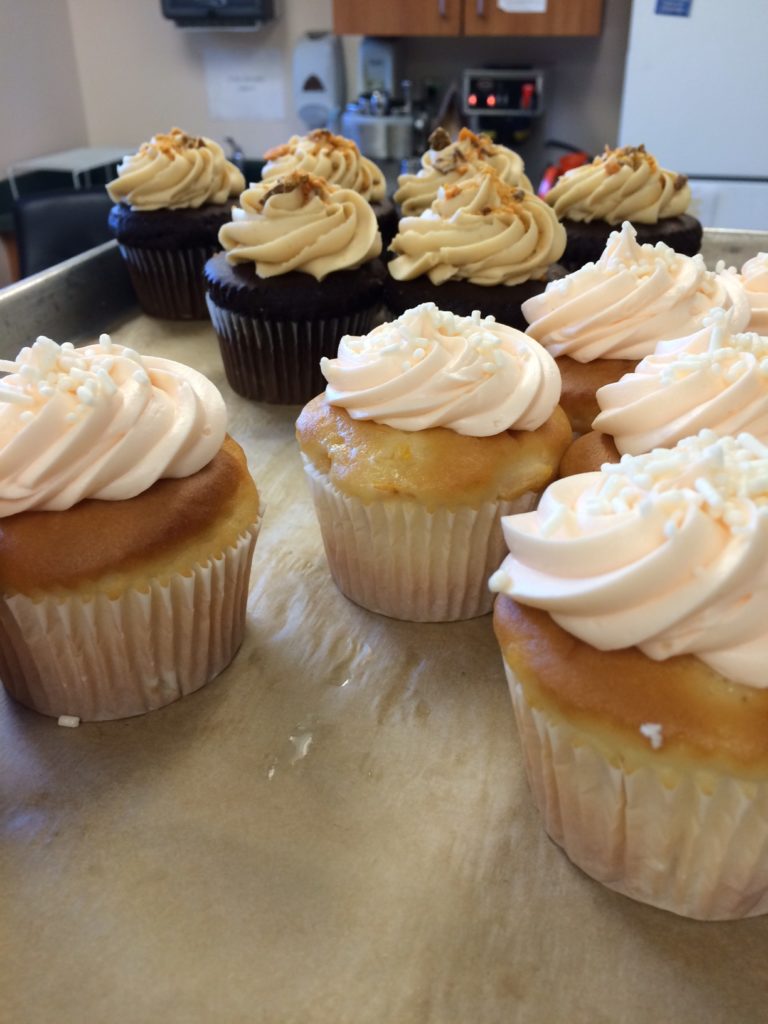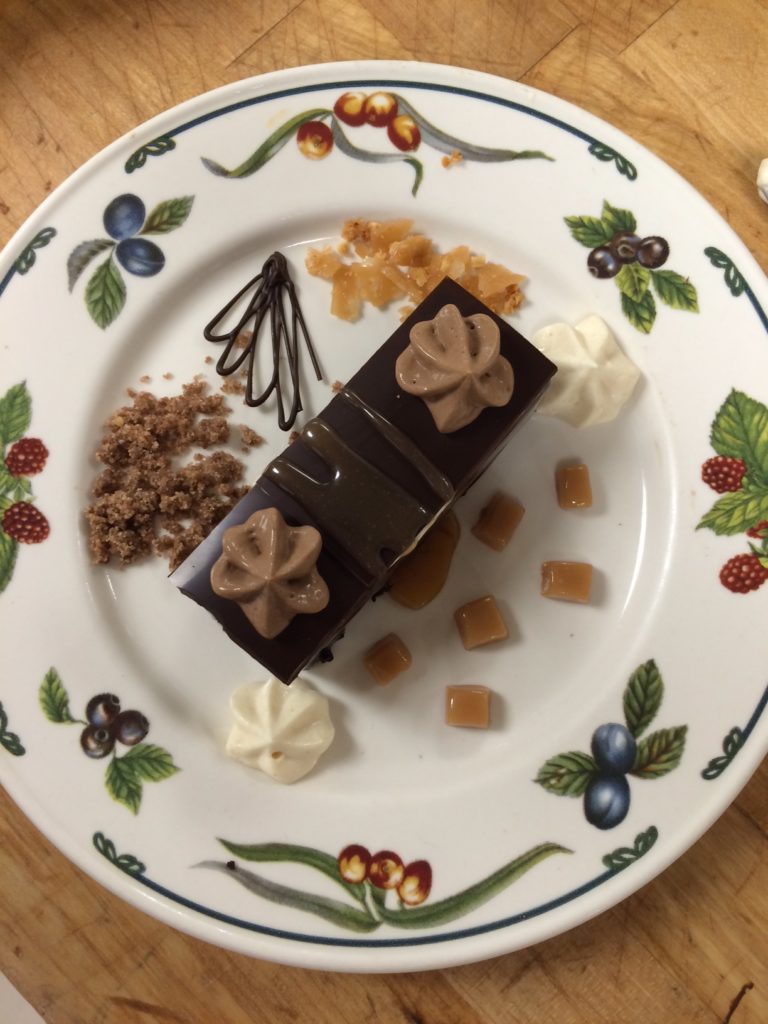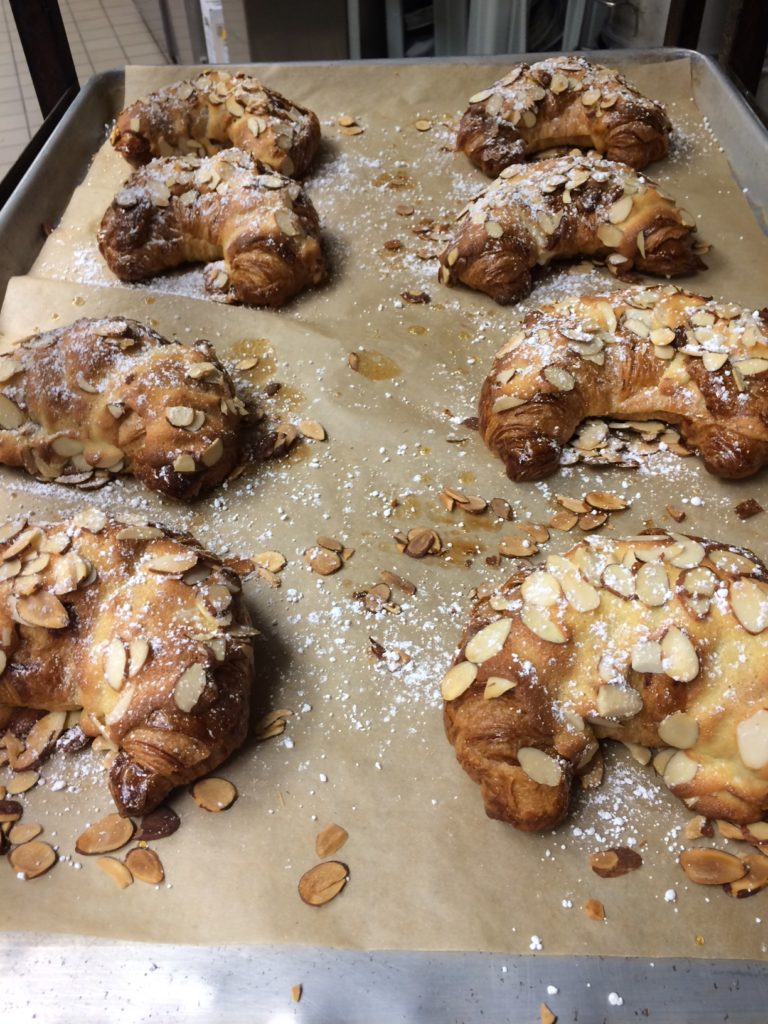I was fortunate to spend part of my summer food service management internship working in the bakeshop at Colorado State University. I’ve always been fascinated by large scale food production, but baking is a whole different story, especially when there is an entire facility dedicated to producing breads, breakfast pastries, and desserts for six dining halls across campus. Some of the methods and recipes were pretty standard, but others surprised me entirely. Here are the most important things I learned from my time at the bakeshop.
Frosting cupcakes is harder than it looks.

Photo courtesy of Laura Broderick

Photo courtesy of Laura Broderick
A pastry bag seems pretty straightforward to use, but put in the wrong hands and a frosting disaster could result. Subtle details, like applying the correct pressure on the bag and swirling the tip around at the perfect speed and height, are quite challenging movements. Here is where a pastry degree, patience, and lots of practice come in handy.
Ingredients are measured in pounds.

Photo courtesy of Laura Broderick
Recipes have to produce volume, meaning 40 pans of cake or 12 dozen muffins. Rather than use multiplication on a small, standard-sized recipe, the recipes typically yield very high numbers. Thus, rather than list 2 cups of flour, the recipe might call for 15 pounds. Because of this, many of the ingredients come in 50 pound bags or bulk boxes, making measuring ingredients a task not for the weak.
It’s not uncommon to make desserts in advance and freeze them.

Photo courtesy of Laura Broderick
When baking for a large event or forecasting the same dessert for multiple days each week, making four or five times the recipe and freezing the desserts makes for much less busy days in the future. For a combination of Orientation and a catered event, the Bakeshop made 16 sheet pans of blondies, which used 112 pounds of dough.
Pastry school isn’t the only path to working in a bakery.
After talking with the employees at the Bakeshop, I realized none of them had the same career journey. One woman was a bookkeeper, another worked in a family restaurant since she was a teenager and spent time working at various restaurants throughout her life. The assistant pastry chef went to culinary school, but apprenticed as a pastry chef at a high-end hotel and ended up gaining his credentials from that experience. So the lesson in the end: you can find end up in a career without having the “typical” educational background.
Go to the break room if you’re hungry.

Photo courtesy of Laura Broderick
Any extra donuts, muffins, cupcakes, bread, brownies, or dessert bars make their way into the break room. When the bakery tests a new recipe, those goodies are also usually put on the rack, too. Even the edges of some desserts that don’t look good enough to give to the dining halls are put on a baking sheet for “reject” treats. Breakfast, snack, or dessert – there’s always something to snack on. It’s difficult to resist the abundance of sweets, but you can always take some home after your shift.
Free time is a chance to test new recipes.

Photo courtesy of Laura Broderick

Photo courtesy of Laura Broderick
During slower weeks, especially in the summer, chefs at the Bakeshop tests new recipes for their products, as well as experiments with their own creative desserts. One day, the executive pastry chef taught me how to make almond croissants. Another day, one of the chefs made a blueberry napoleon with homemade blueberry jam. On my final day, I plated a fancy dessert with a ton of different garnishes. The chef and I decided on a chocolate peanut butter caramel dessert and made all of the layers from scratch, from the cake to the mousses to the caramel. Of course, this wasn’t going to the dining halls, but it was a great way to see the chefs get creative in the kitchen.


